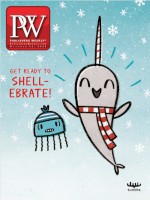In The Search for John Lennon: The Life, Loves, and Death of a Rock Star (Pegasus, Dec.), Jones reveals new layers of the Beatle.
What makes this biography different from other John Lennon biographies?
All of my other friends who’ve written biographies of John have been men. As a woman and as a mother, I felt there was some new digging I could do.
What were the specific moments that most shaped him?
I can cut it right down to the women. His mother, Julia, gave him away to her sister, Mimi, when he was five. Mimi was very caustic and strict, so he lacked affection from a young age. Then, at 17, his mother was hit by a car and killed right outside of his childhood home. I’ve been to this home and, from his bedroom window, he would’ve opened the curtains every single morning to the spot where his mother died. Unimaginably excruciating. Many songs we love, like “Mother” and “Julia,” and lyrics like “Help! I need somebody, help! Not just anybody!” were John desperately screaming into the void she left.
A quote from retired Granada Television producer Johnnie Hamp says, “The secret to dealing with him and to getting the best out of him was recognizing which John you were faced with on any given day.” Can you expand on this?
In his heart, John was a hard, leather-clad, Elvis-style rocker. He gave that away to become the matching suits, mop-top, squeaky clean Beatle. His first wife, Cyn, said that after his mother died it was almost as if he didn’t care whether he lived or died. He just kept becoming whichever John he needed to be to survive. That’s why the title of the book is cryptic. It’s me finding that original John. When did he die, and who killed him?
What is something most people don’t know about him but should?
There’s a myth that John gave up music for five years near the end of his life to become a house husband while Yoko took care of business. He was actually writing music that whole time while tending to the baby, recording bits and pieces on cassette and tucking it away. He was planning a massive comeback world tour in 1981. What John really wanted was to be back on the open road. And, if he were alive today, I’m sure he would’ve given Paul a run for his money.



 Volume 267
Issue 41
10/12/2020
Volume 267
Issue 41
10/12/2020





